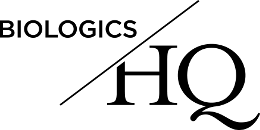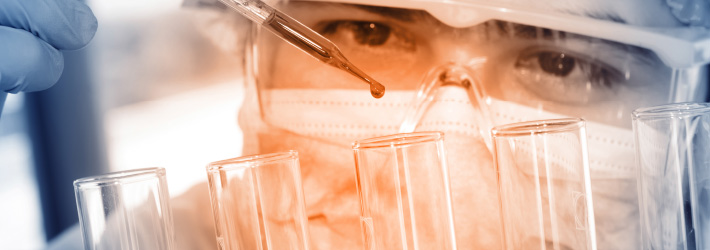On December 8, 2023, the PTAB instituted three of Samsung Bioepis’s pending IPRs against Alexion’s Soliris® (eculizumab), IPR2023-00933 (for U.S. Patent No. 9,732,149), IPR2023-00998 (for U.S. Patent No. 9,718,880), and IPR2023-00999 (for U.S. Patent No. 9,725,504). The challenged patents include composition of matter, formulation, and method of treatment claims.
On December 19, 2023 and December 20, 2023, the PTAB instituted two additional Samsung Bioepis IPRs against Soliris®, IPR2023-01070 (for U.S. Patent No. 10,703.809) and IPR2023-01069 (for U.S. Patent No. 10,590,189). The challenged patents include method of treatment claims using eculizumab, a humanized anti-C5 antibody, for treating patients with paroxysmal nocturnal hemoglobinuria (PNH).
While as of December 31, 2023 Samsung Bioepis has not yet announced an aBLA filing for a Soliris® biosimilar in the U.S., its biosimilar candidate Epysqli™ (eculizumab) was approved in the E.U. in May 2023. [UPDATE: According to a complaint filed by Alexion on January 3, 2024, Samsung Bioepis’s aBLA filing for its Soliris® biosimilar candidate SB12 was accepted by the FDA on or before July 7, 2023. See BPCIA Complaint Against Proposed Soliris® (eculizumab) Biosimilar SB12 Filed.]
Soliris® patents previously faced IPR challenges by Amgen in 2019 that resulted in settlements. To date there have not been any public announcements of aBLA filings for Soliris® biosimilars, nor have there been any BPCIA litigations related to a Soliris® biosimilar.
Soliris®‘s U.S. and E.U. sales were reported to be approximately $3.2 billion USD in 2022.
The PTAB activity for EYLEA® (aflibercept) from November (see EYLEA® (aflibercept) IPR and BPCIA Litigation Updates) has continued into December, with the PTAB granting institution of Samsung Bioepis’s IPR2023-01312 against Regeneron and its motion for joinder with Celltrion’s IPR2023-00462 on December 8, 2023. The challenged patent, U.S. Patent No. 10,464,992 entitled “VEGF Antagonist Formulations Suitable for Intravitreal Administration,” claiming a formulation of aflibercept, is also subject to two pending litigations between Samsung Bioepis and Regeneron, 1:23-cv-00094 (N.D.W. Va.) and 1:23-cv-00106 (N.D.W. Va.).
On December 14, 2023, Celltrion filed IPR2024-00260 along with a motion for joinder with Samsung Bioepis’s IPR2023-00884, which was instituted in November. This is the twenty-sixth IPR to be filed related to an EYLEA® patent. The challenged patent, U.S. Patent No. 11,253,572 entitled “Use of a VEGF Antagonist to Treat Angiogenic Eye Disorders,” claiming a method of treating angiogenic eye disorders using aflibercept, is also subject to a pending litigation between Celltrion and Regeneron, 1:23-cv-00089 (N.D.W. Va.).
A new IPR was filed on December 18, 2023 by Biocon Biologics, and the related parties in-interest Janssen, Johnson & Johnson, Viatris, Momenta, and Mylan (IPR2024-00298), along with a motion for joinder with Samsung Bioepis’s IPR2023-00884. Biocon’s IPR challenges claims of Regeneron’s U.S. Patent No. 11,253,572 that are directed to treating angiogenic eye disorders, including diabetic macular edema (“DME”) and age-related macular degeneration (“AMD”), by administering aflibercept via loading doses followed by maintenance doses.
In the ongoing Northern district of West Virginia litigation (1:22-cv-00061), judgment against Mylan’s proposed biosimilar M710 issued on December 27, 2023 after a bench trial finding that formulation claims 4, 7, 9, 11, and 14-17 of Regeneron’s U.S. Patent No. 11,084,865 were valid and infringed. It was also found that method of treatment claims 6 and 25 of U.S. Patent No. 11,253,572 and method of treatment claims 11 and 19 of U.S. Patent No. 10,888,601 were infringed, but these claims were found to be invalid as obvious over the prior art (the claims survived an anticipation challenge). The opinion is currently sealed.
Further, following the above judgment, on December 28, 2023, Regeneron filed emergency motions for preliminary injunction schedules and requested emergency status conferences in each of the pending EYLEA® biosimilar litigations (1:23-cv-00089 (N.D. W. Va.) against Celltrion; 1:23-cv-00094 (N.D.W. Va.) and 1:23-cv-00106 (N.D. W. Va.) against Samsung Bioepis, and 1:23-cv-00097 (N.D. W. Va.) against Formycon. A status conference occurred on January 5, 2024.
On December 27, 2023, Regeneron filed a second lawsuit against Samsung Bioepis (1:23-cv-00106 (N.D. W. Va.), fifth EYLEA® biosimilar lawsuit overall), asserting 51 patents against Samsung’s proposed biosimilar SB15. This lawsuit was brought approximately one month after Regeneron’s lawsuit against Samsung Bioepis, 1:23-cv-00094 (N.D.W. Va.), which we previously reported on (see EYLEA® (aflibercept) IPR and BPCIA Litigation Updates). While much of the Complaint is redacted, Regeneron asserted 15 patents that had not been previously asserted in the prior litigation (12 of which have not previously been asserted in any EYLEA® biosimilar proceeding), including five design patents. This is the first time design patents have been asserted in a BPCIA litigation. Regeneron also asserted U.S. Patent No. 11,084,865 that was found valid and infringed in the 1:22-cv-00061 Mylan judgment.
Among the newly asserted patents are:
- Devices: U.S. Patent Nos. 10,182,969, 11,433,186, 11,439,758, 11,478,588
- Formulation, Injection Device, Method of Treatment: U.S. Patent No. 11,103,552
- Packaging: U.S. Patent No. 11,160,918
- Manufacturing: U.S. Patent No. 11,577,025
- Design: U.S. Patent Nos. D858,754, D906,102, D934,069, D961,376, D961,377, and
Patents asserted in other EYLEA® biosimilar litigations but not previously against Samsung Bioepis:
- U.S. Patent Nos. 11,459,374 (manufacturing), 11,505,593 (prefilled syringe), 11,793,926 (packaging).
Samsung Bioepis, Celltrion, and Biocon have filed aBLAs for their EYLEA® biosimilar candidates SB15, CT-P42, and M710 respectively.
EYLEA®‘s U.S. sales were reported to be about $6.26 billion in 2022.
We continue to monitor these cases closely and will provide updates once available.
For more information about these and other biosimilar patent disputes, please visit BiologicsHQ.
_____________________________________________________
The authors would like to thank April Breyer Menon for her contributions to this article.


